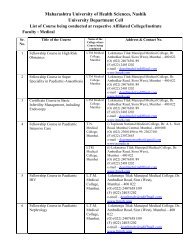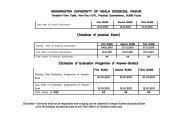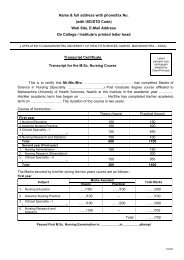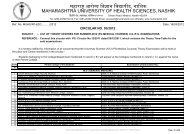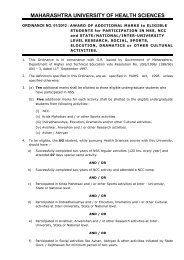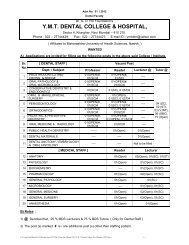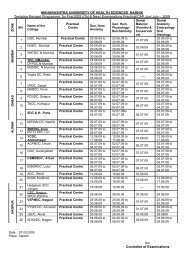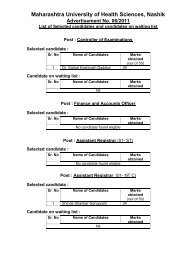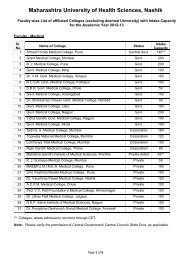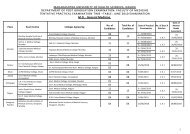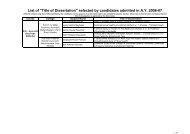Unit I
Unit I
Unit I
Create successful ePaper yourself
Turn your PDF publications into a flip-book with our unique Google optimized e-Paper software.
12. Integumentary SystemSkin, the largest organ of the body consists of two layers, namely, epidermis and dermis which are firmlyattached to each other.Epidermis is made up of keratinised stratified squamous epithelium. It is avascular and is nourished bydiffusion. The basal layer of columnar cells rest on a basement membrane and is called stratum basale.Nuclei are distinct and show mitosis. Melanocytes are derived from melanoblasts and they are situated inthe basal layer of epidermis. They produce the pigment melanin, which is taken up by epithelial cells ofepidermis by phagocytosis. Langerhans cells are seen in metallic preparation showing branching processes.Next layer is stratum spinosum of polyhedral cells. Cells show many spine like processes loaded withtonofilaments. Third layer is stratum granulosum, which is 2 to 4 cell thick. They show keratohyalinegranules in the cytoplasm, which is basophilic in nature. Fourth layer is stratum lucidum; it is thin, clear,bright and homogenous line consists of eleidin substance. Eleidin is the transformed product of keratohyaline.Outermost layer is stratum corneum or layer of keratin. Here nuclei and cytoplasmic organelles disappearand keratohyaline granules fade away due to intracellular activity of lysosome-derived enzymes. The granulesare converted into a homogenous matrix in which all the previously formed filamentous material of the cellbecomes embedded. Each cell is transformed into one of the squames of keratin. In some specieskeratinisation can be in the absence of keratohyaline granules.Deepest cell layers proliferate throughout lifeand newer cells are pushed towards the surface. Here they die and are transformed into horny materialcalled as keratin. Keratin is water-proof and is a barrier for pathogenic micro-organisms. Keratin is toughfibrous protein highly resistant to chemical changes.Dermis is made up of connective tissue showing dermal papillae extending into epidermis, and epidermisshows epidermal papillae extending into dermis. Outer layer of dermis is called papillary layer because itshows the papillae. Deeper layer of dermis is called reticular layer, which is made up of thicker denseirregularly arranged connective tissue. Elastic fibres form network of very fine fibres in papillary layer whilein reticular layer they form a network of randomly distributed coarse fibres. Apart from various skinappendages and fibres, the dermis shows many fibroblasts, few macrophages and adipose cells.Theintegument consists of skin, hair, nail, sweat and sebaceous glands. The thickness of skin varies from0.5mm to 4 mm. It rests on the subcutaneous tissue. Depending on the thickness of the epidermis, skin isclassified into ‘Thin Skin’ and ‘Thick Skin.’Thin Skin: The epidermis is thin in ‘Thin Skin.’ Only three layers of epidermis nly. stratum corneum,stratum granulosum and stratum basale are clearly seen. Sections of sweat and sebaceous glands, hairfollicles, blood vessels are also seen. This type of skin is seen in the scalp, flexor aspect of limbs etc.Thick Skin: The epidermis is thick in ‘Thick Skin.’ All the five layers of epidermis are clearly seen. Thickskin may be hairy e.g. extensor aspect of limbs, back. Thick skin which is not hairy or ‘Glabrous’ is seenin the skin of palm, sole of foot.Notes:63



